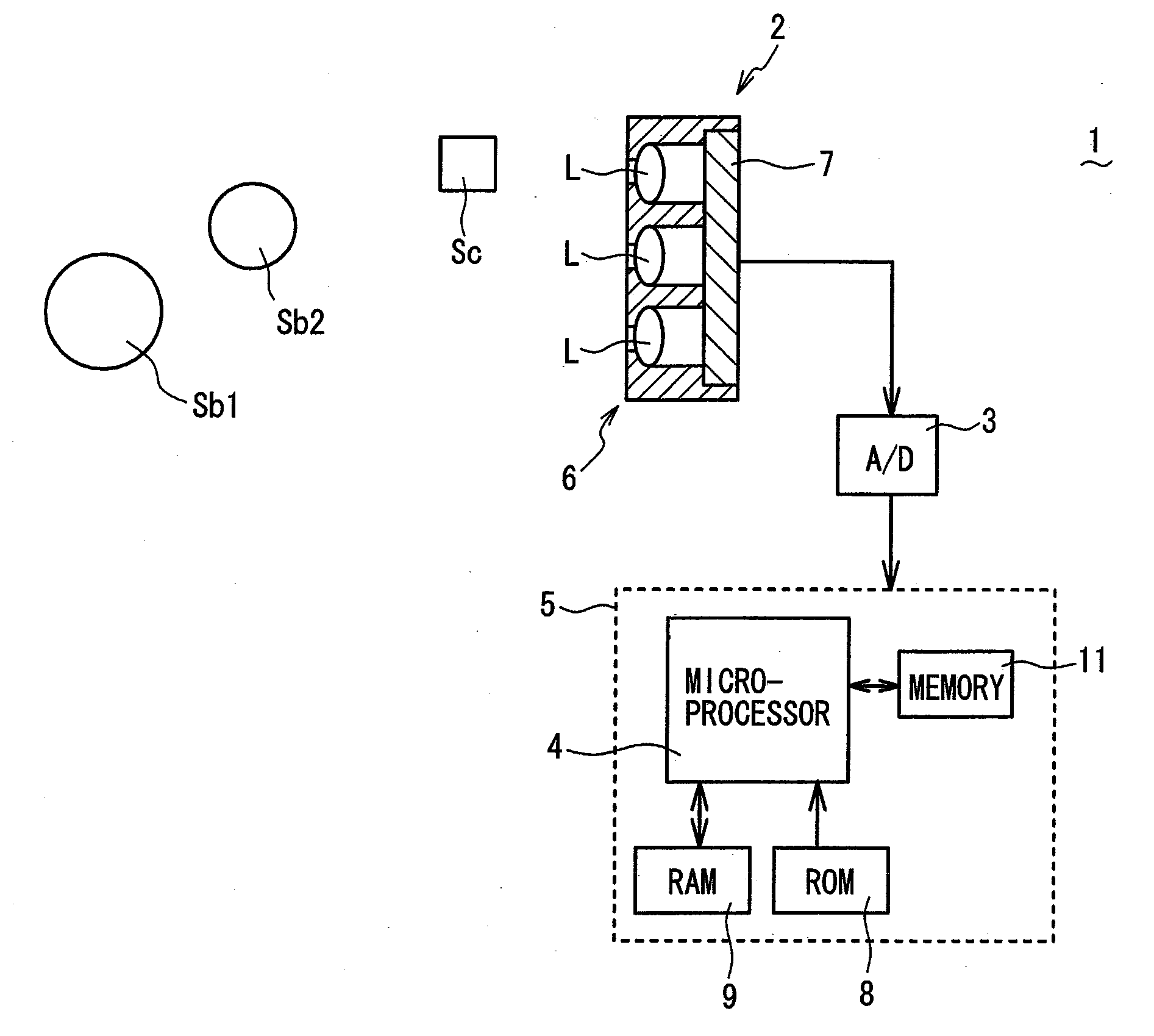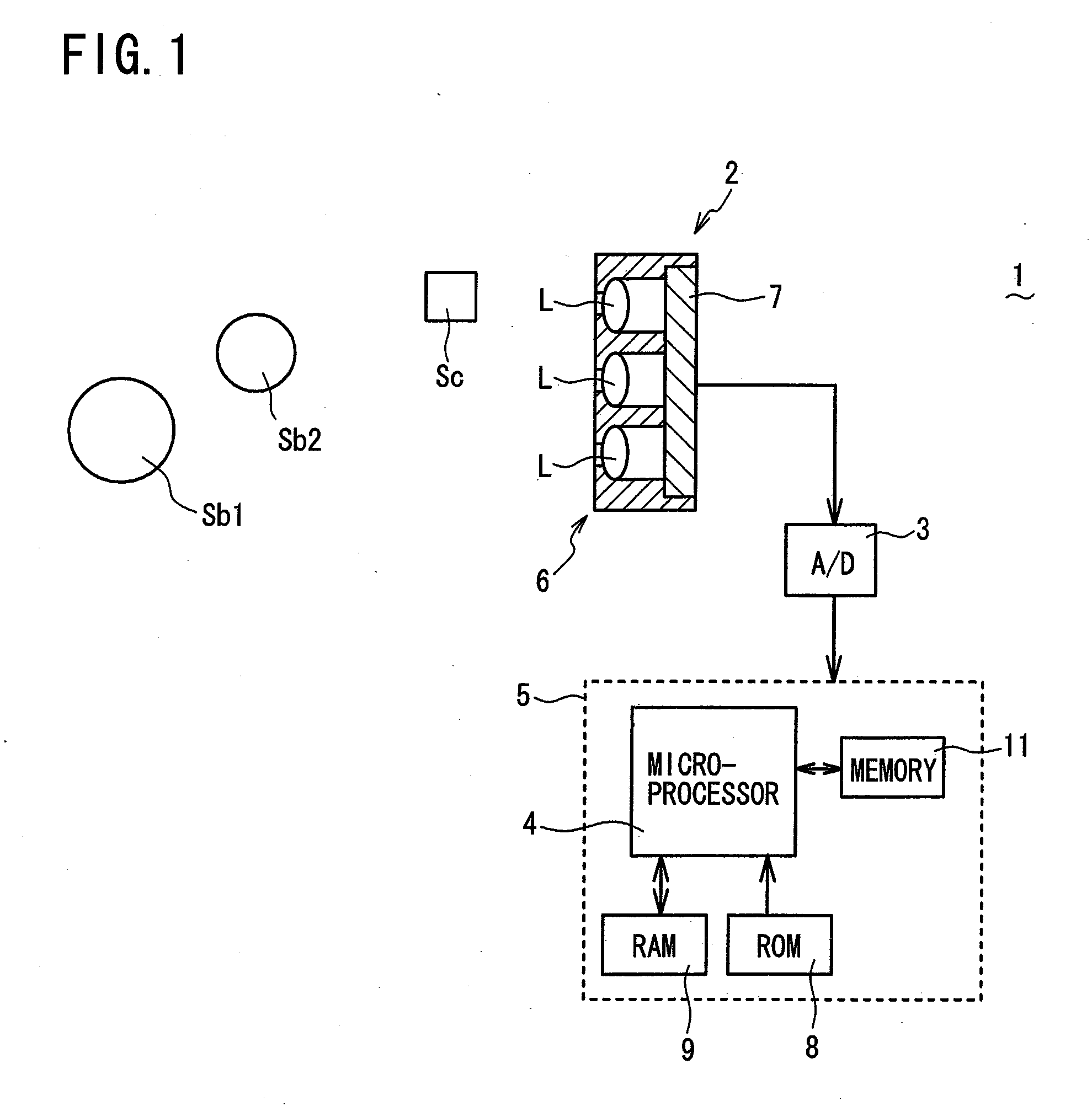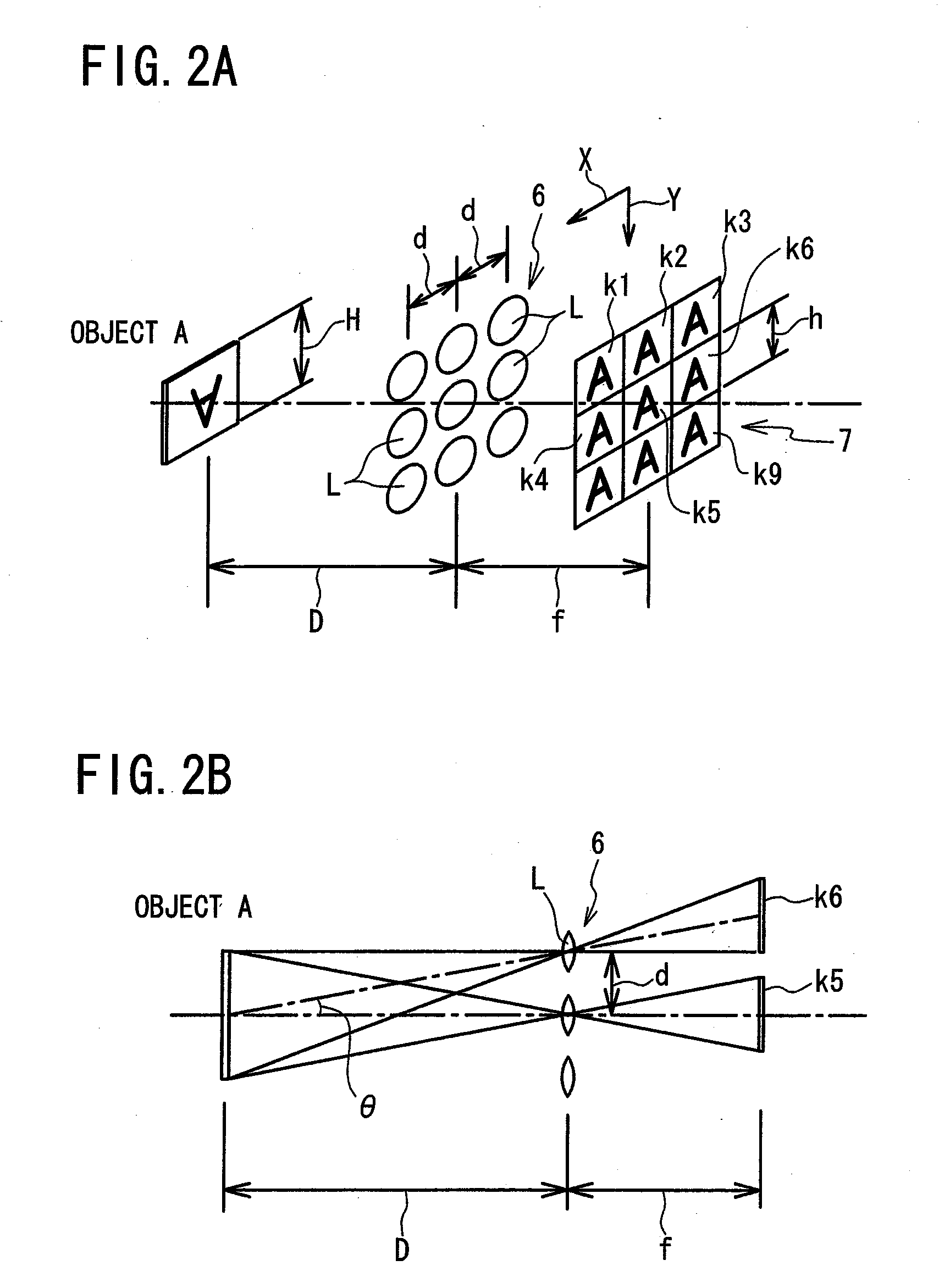Object Distance Deriving Device
- Summary
- Abstract
- Description
- Claims
- Application Information
AI Technical Summary
Benefits of technology
Problems solved by technology
Method used
Image
Examples
first embodiment
[0033]Referring to FIG. 1 to FIG. 11, an object distance deriving device 1 according to a first embodiment of the present invention will be described. FIG. 1 is a schematic view, partly in block form, of an object distance deriving device 1 of the present embodiment. As shown in FIG. 1, the object distance deriving device 1 comprises a compound-eye imaging unit 2 (claimed “imaging means”) and a distance calculation unit 5 (claimed “distance calculating means”) mainly composed of a microprocessor 4 for receiving, via an A / D (Analog-to-Digital) converter 3, image information captured by the compound-eye imaging unit 2, and for calculating a distance (object distance) between an object and the compound-eye imaging unit 2 (more specifically optical lens array 6) based on the received and digitized image information. As will be apparent from the description below, the microprocessor 4 serves as claimed “distance calculating means”, “distance setting means”, “reconstructed image creating ...
second embodiment
[0054]An object distance deriving device 1 according to a second embodiment of the present invention is substantially the same as that of the first embodiment, except that in the second embodiment, the evaluation values SSD(x,y) as calculated in the evaluation value calculation step S4 in the flow chart of FIG. 3 are smoothed. More specifically, the microprocessor 4 applies a known smoothing filter to, and thereby smooths, the evaluation values SSD(x,y) as calculated in S4. By smoothing the calculation evaluation values SSD(x,y), the distribution of the evaluation values SSD(x,y) (smoothed evaluation values) on the XY plane becomes smooth (refer to FIG. 8), making it possible to more accurately derive the object distance by preventing an erroneous derivation of the object distance D due to determination of an improper temporary distance Di as the object distance D in the distance determining step S6. It is to be noted that the smoothing of the evaluation values SSD(x,y) can be perfo...
third embodiment
[0055]An object distance deriving device 1 according to a third embodiment of the present invention is substantially the same as that of the first embodiment except for the following two points. The first point is that according to the third embodiment, in the reconstructed image creating step S2 in the flow chart of FIG. 3, the microprocessor 4 extracts a high-frequency component of each of unit images k1 to k9 so as to create each corresponding high-frequency component unit image, and then creates one high-frequency component reconstructed image Adi from the nine high-frequency component unit images by using the same method as described above. The second point is that according to the third embodiment, in the reverse projection image creating step S3, the microprocessor 4 extracts a high-frequency component of each of unit images k1 to k9 so as to create each corresponding high-frequency component unit image, and then creates nine high-frequency component reverse projection images...
PUM
 Login to View More
Login to View More Abstract
Description
Claims
Application Information
 Login to View More
Login to View More - R&D
- Intellectual Property
- Life Sciences
- Materials
- Tech Scout
- Unparalleled Data Quality
- Higher Quality Content
- 60% Fewer Hallucinations
Browse by: Latest US Patents, China's latest patents, Technical Efficacy Thesaurus, Application Domain, Technology Topic, Popular Technical Reports.
© 2025 PatSnap. All rights reserved.Legal|Privacy policy|Modern Slavery Act Transparency Statement|Sitemap|About US| Contact US: help@patsnap.com



